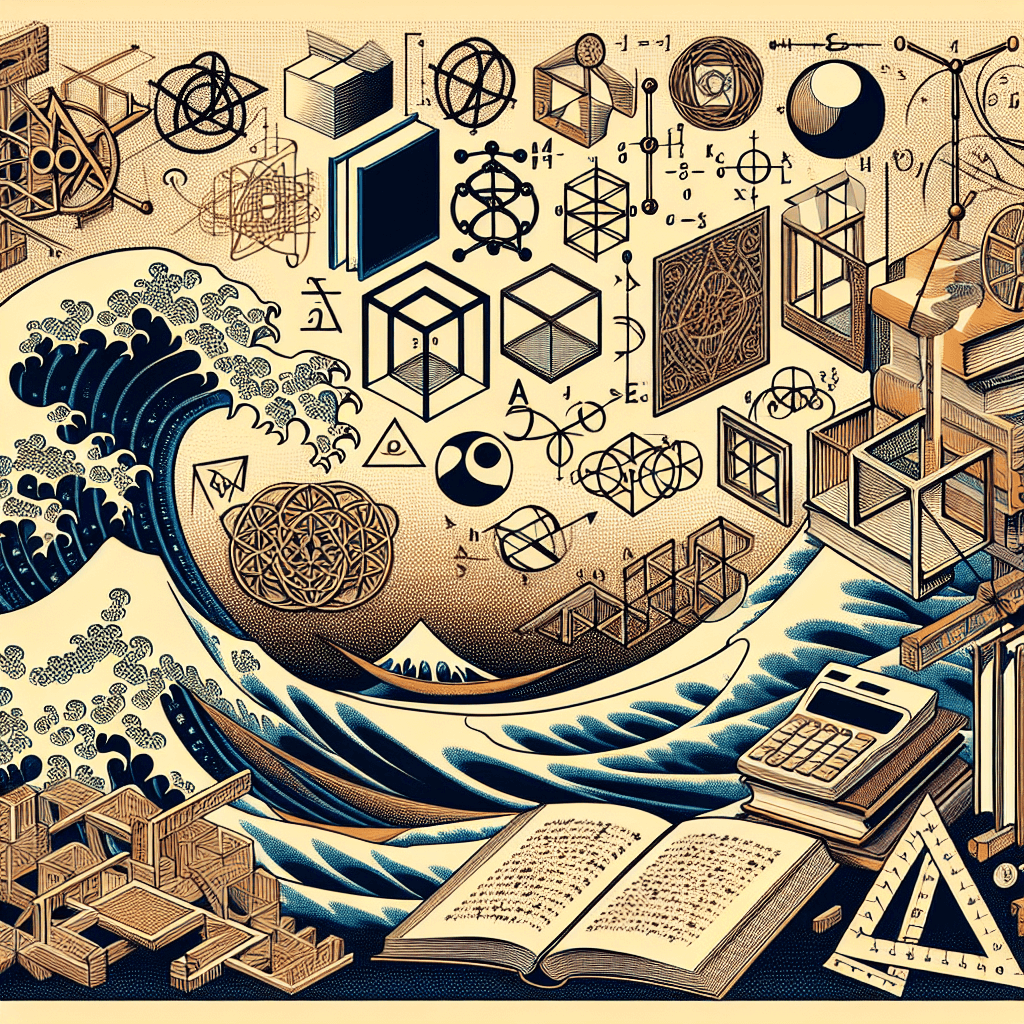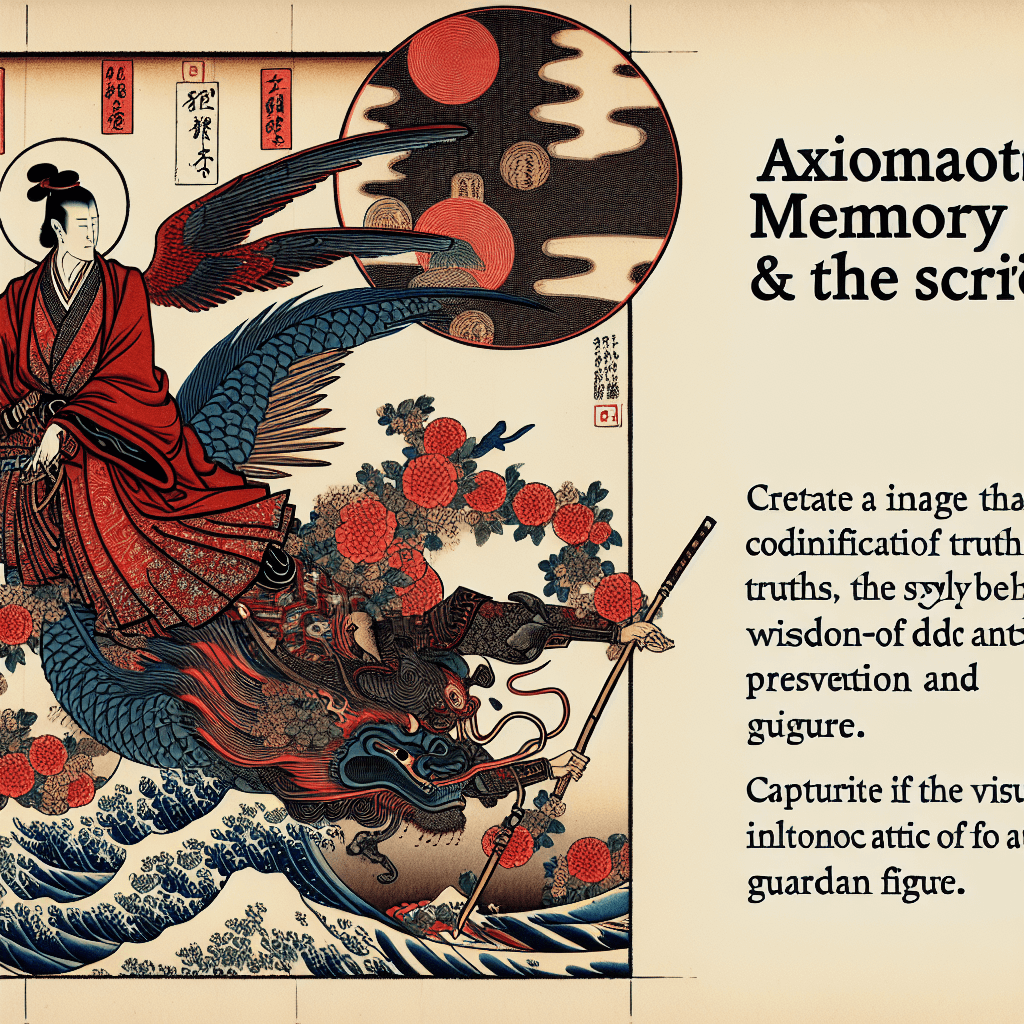Axiomatic Systems: The Bedrock of Mathematical Thought
syndu | Sept. 9, 2024, 12:08 a.m.

Review: "Axiomatic Systems: The Bedrock of Mathematical Thought"
Introduction
In the vast and intricate world of mathematics, axiomatic systems serve as the foundational bedrock upon which complex structures are built. These systems, defined by a set of axioms or self-evident truths, provide a unifying framework that allows mathematicians to explore and understand the relationships between various mathematical entities. This blog post will delve into the fundamental concepts of axiomatic systems, their historical context, key figures, and the significance of these systems in mathematics. Additionally, we will explore visual metaphors and examples to make these abstract concepts more accessible.
What is an Axiomatic System?
An axiomatic system is a set of axioms, or self-evident truths, from which theorems and other mathematical statements are logically derived. These axioms are the starting points for any mathematical theory, providing the basic assumptions upon which the entire structure is built. The beauty of axiomatic systems lies in their simplicity and power; from a few simple axioms, a vast and complex mathematical landscape can be explored.
Key Components of Axiomatic Systems:
- Axioms: Fundamental statements accepted without proof.
- Definitions: Precise meanings assigned to terms used in the axioms and theorems.
- Theorems: Statements derived from axioms through logical reasoning.
- Proofs: Logical arguments that demonstrate the truth of theorems based on axioms and previously established theorems.
Historical Context and Key Figures
The concept of axiomatic systems has a rich history, with contributions from many key figures in mathematics. One of the earliest and most influential works is Euclid's "Elements", written around 300 BCE. Euclid's axiomatic approach to geometry laid the groundwork for future developments in mathematics and established a standard for mathematical rigor.
Key Historical Figures:
- Euclid: Known for his work "Elements", which systematically presented the axioms and theorems of geometry.
- David Hilbert: In the 19th century, Hilbert further developed the axiomatic method with his "Foundations of Geometry", which redefined Euclidean geometry with a more rigorous set of axioms.
- Giuseppe Peano: Known for Peano axioms, which form the foundation of arithmetic.
The Role of Axioms
Axioms are the foundational building blocks of any axiomatic system. They are statements that are accepted as true without proof and serve as the starting points for logical reasoning. In Euclidean geometry, for example, the axioms define the properties of points, lines, and planes, and how they interact with one another. These axioms provide a consistent framework that allows mathematicians to explore and prove various geometric theorems.
Examples of Axioms:
- Euclidean Axioms: Such as "Through any two points, there is exactly one straight line."
- Peano Axioms: Such as "0 is a natural number" and "Every natural number has a successor."
Visual Metaphors and Examples
To make the abstract concepts of axiomatic systems more accessible, we can use visual metaphors and examples. The Godai game offers a unique and engaging way to visualize these concepts. In the game, players interact with various elements within a defined space, much like how mathematicians work within the framework of an axiomatic system. The game's visual metaphors and interactive nature make complex mathematical concepts more relatable.
Visual Metaphors:
- Points and Lines in Euclidean Geometry: In the Godai game, points can be represented as objects within the game's space, and lines as connections between these points. By manipulating these elements within the game's space, players can explore the relationships between points and lines, and gain insights into the underlying axioms that govern their behavior.
- Shapes and Structures: Combining points and lines to form shapes, players can visualize how axioms lead to the creation of complex structures.
"These axioms provide a consistent framework that allows mathematicians to explore and prove various geometric theorems."
The Significance of Axiomatic Systems
Axiomatic systems are more than just abstract constructs; they are the glue that binds all of mathematics together. They provide the context and framework within which mathematical entities exist and interact. Without axiomatic systems, the abstract world of mathematics would lack coherence and consistency.
Importance in Mathematics:
- Consistency: Ensures that no contradictions arise within the system.
- Completeness: Every statement within the system can be proven true or false.
- Independence: No axiom can be derived from the others, ensuring each axiom's necessity.
Conclusion
Axiomatic systems are fundamental to the study of mathematics, providing the foundational framework upon which complex structures are built. Through the engaging and interactive nature of the Godai game, players can visualize and interact with these systems, gaining a deeper appreciation for the beauty and elegance of mathematical concepts.
As we continue to explore the abstract world of mathematics, axiomatic systems serve as a reminder of the infinite potential and profound connections that bind all mathematical entities together. By engaging with these systems, we can unlock new insights and discoveries, and continue to push the boundaries of human knowledge and understanding.
Title:
Axiomatic Systems: The Bedrock of Mathematical Thought
Summary:
Introduce the fundamental concepts of axiomatic systems, their significance in mathematics, and how they provide a unifying framework for various mathematical structures. Using the Godai game as a metaphor, this blog post explores how axiomatic systems serve as the canvas upon which the abstract world of mathematics is painted.
Key Points:
- Definition of axiomatic systems
- The role of axioms
- Historical context and key figures
- The Godai game as a metaphor
- The significance of axiomatic systems
Goal:
To produce a high-quality blog post that effectively communicates complex mathematical concepts through the engaging and relatable metaphors of the Godai game, thereby attracting and inspiring readers to explore the abstract world of axiomatic systems.




